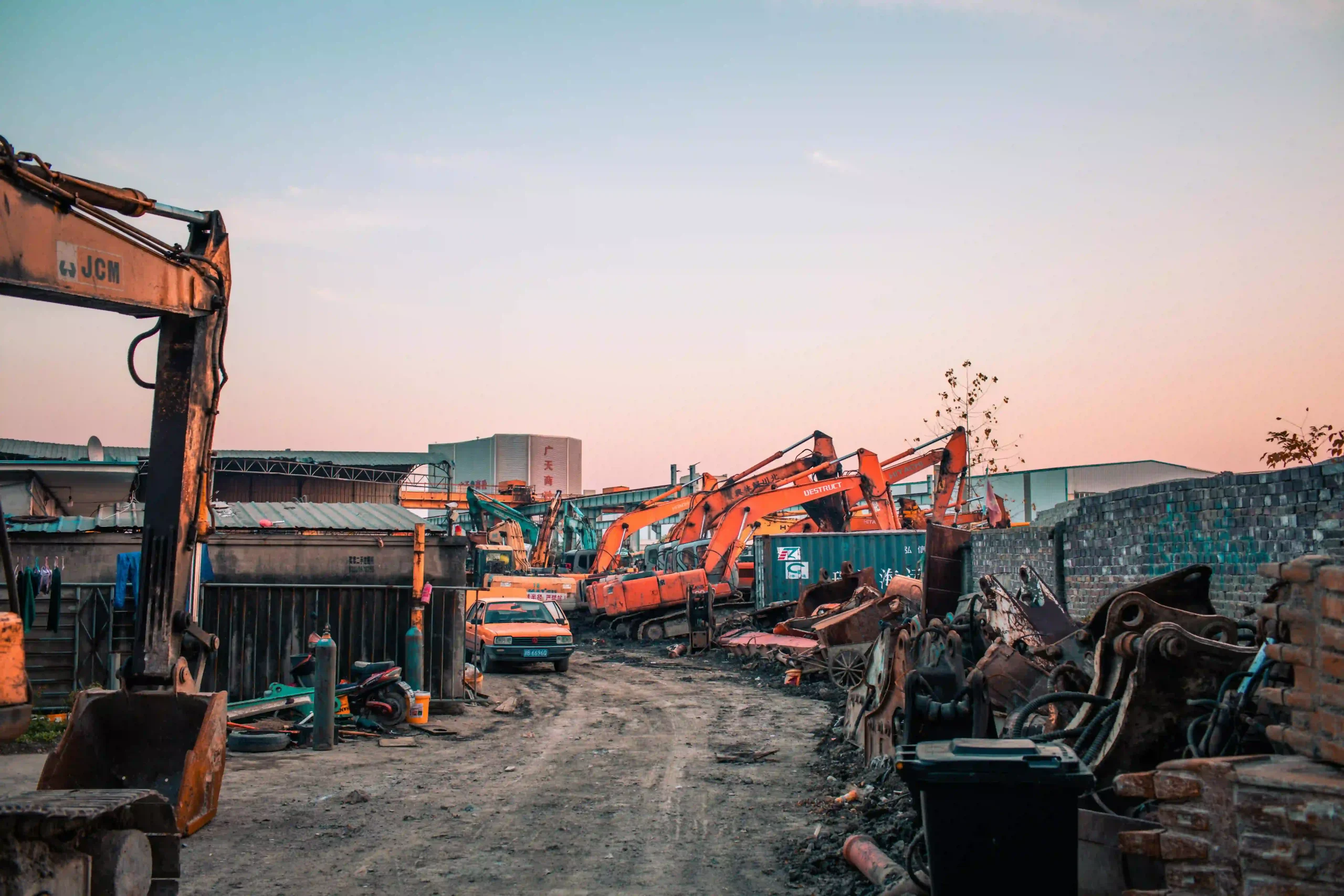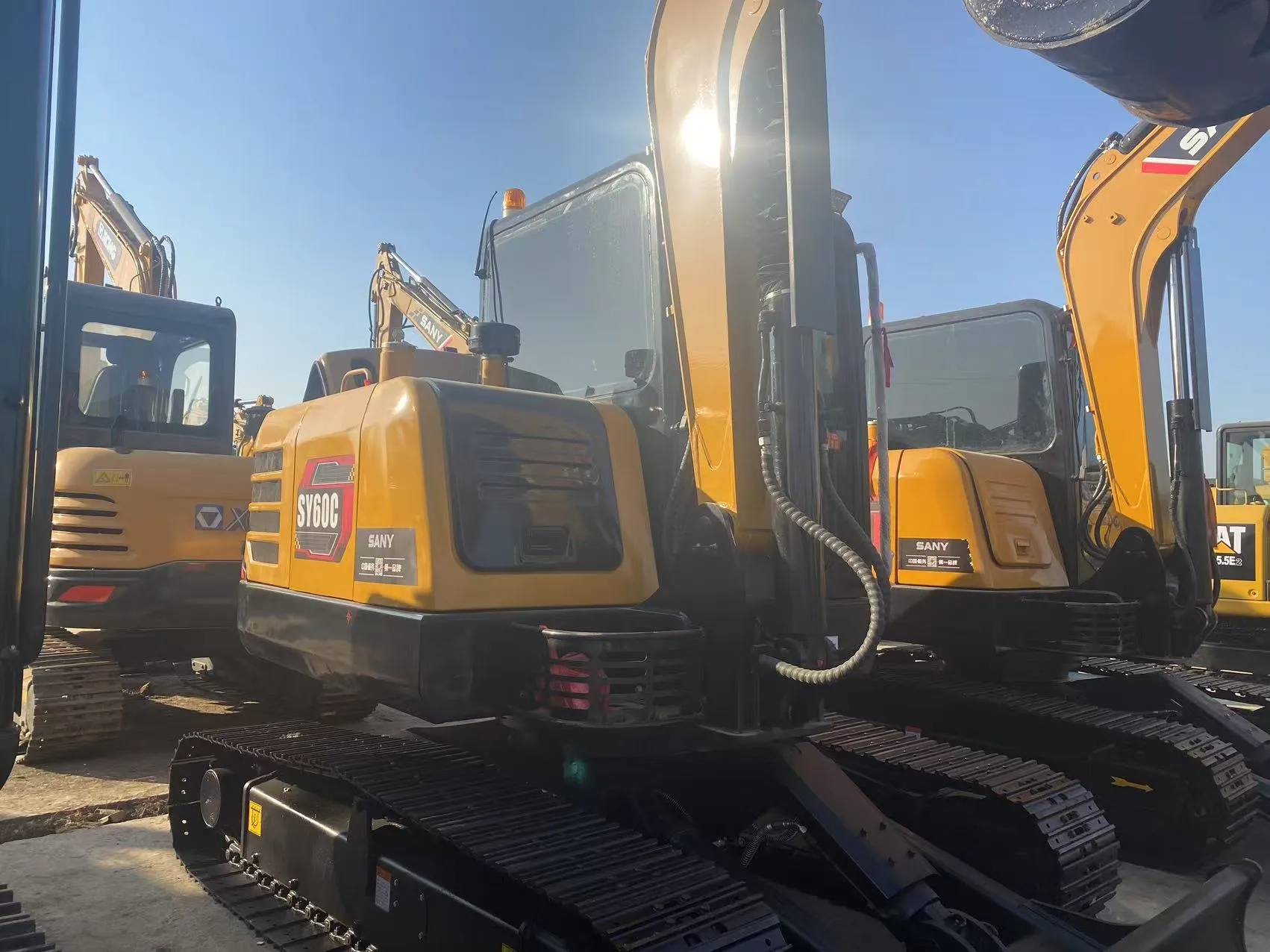Which Excavator Reigns Supreme as the Largest Bucket-Wheel Machine
If you’ve ever stood near a large excavator, you know the feeling — that deep mechanical hum and the slow swing of steel that moves more earth in an hour than a hundred workers could in a week. But when we talk about bucket-wheel excavators, we’re talking about something else entirely. These are not just big machines; they’re on another scale.
The biggest of them all can dig non-stop for days, moving mountains of earth as if they were piles of sand. So, which one takes the crown as the largest? And what role do companies like Guangdong Kingho Technology Co., Ltd. play in this world of giant machinery and precision-built attachments? Let’s find out.

How Does the World’s Largest Bucket-Wheel Excavator Operate?
The answer to “who’s the biggest” is simple — it’s the Bagger 288, built in Germany by Krupp. This steel monster weighs about 13,500 tons and can dig up to 240,000 cubic meters of material every 24 hours. That’s like scooping out a football field 30 meters deep — every single day.
The Giant Bagger 288 and Its Unmatched Capacity
The Bagger 288 was made for the Rheinbraun coal mines. With a wheel over 21 meters wide and 18 giant buckets, it’s a masterpiece of heavy engineering. It runs entirely on electric power, pulling energy from external supply lines that feed its motors.
Despite moving only about 10 meters per minute, it’s shockingly efficient. The whole system acts like a moving conveyor plant, operating quietly, slowly, and constantly.
Energy Efficiency and Continuous Mining Technology
One of the most interesting parts of the Bagger 288 is its power setup. Using electricity instead of diesel means less noise, no exhaust, and steadier performance. The continuous mining process removes the downtime between loads — material moves through conveyors instead of needing trucks.
Maintenance Challenges and Engineering Solutions
Keeping something this large in working order is no small job. Maintenance teams inspect wheel bearings, monitor hydraulic pressure, and test motor circuits daily. Engineers also use sensors to track metal fatigue and vibration.
The modular design makes replacement easier — similar to Kingho Technology’s concept of quick-change attachments for excavators. Kingho’s products, like hydraulic breakers and pulverizers, follow the same idea: less time swapping, more time working.
Why Are Bucket-Wheel Excavators Essential for Large-Scale Mining?
If time and volume are your biggest challenges, nothing beats a BWE. These machines were designed for open-pit mining where tons of material must move quickly and steadily.

Continuous Earthmoving and Material Handling
Unlike a normal excavator that takes breaks between moves, a BWE keeps the process flowing. Its conveyors carry material straight to transport belts or dump zones. This setup makes operations faster, cleaner, and safer.
Reduction of Labor and Operational Costs
Fewer machines mean fewer workers and lower fuel expenses. Since BWEs are electric, they can run for long hours with lower running costs. In large mines, this saves millions every year in energy and maintenance.
Environmental and Resource Efficiency Advantages
Even though they’re massive, BWEs can actually reduce the site’s carbon footprint. Electric power produces less pollution, and fewer support vehicles mean less fuel burned. Mines using BWEs often report smoother site restoration afterward.
Can Advanced Attachments Enhance Excavator Performance?
Now, not everyone needs a Bagger 288. Most construction or demolition jobs rely on smaller, mobile excavators — but with the right attachments, those machines can punch way above their weight. That’s where Kingho Technology steps in.
The Role of Hydraulic Breakers in Heavy-Duty Demolition
Kingho’s hydraulic breakers pack serious power. Built for 20–36-ton excavators, they use high-pressure oil flow — up to 210 bar — to break through rock, reinforced concrete, and old foundations.
They’re strong, easy to maintain, and designed for long service life. Many contractors use them in quarries or for highway demolition where strength and speed matter most.
Hydraulic Pulverizers for Crushing and Recycling
For concrete recycling, Kingho’s hydraulic pulverizers are a must-have. Made from Hardox 500 steel, they’re durable but light enough for flexible movement. These tools crush and separate materials quickly, reducing both noise and debris.
Sorting and Steel Grabs for Material Handling Efficiency
Then there are Kingho’s sorting grabs and steel grapples, built with Q345 and NM400 steel. They can rotate a full 360 degrees, giving operators better control. From scrap yards to ship ports, they make lifting and loading smoother and faster.
How Does Kingho Technology Contribute to Excavator Innovation?
Behind many high-performing excavators, there’s a company that makes their tools better. That’s what Kingho Technology has done since 2009 — designing attachments that boost power and flexibility.
Decade of Expertise in Excavator Attachments Manufacturing
With more than ten years in research and production, Kingho manufactures hydraulic breakers, shears, crushers, grapples, and other attachments. The company has developed over 50 models, serving industries like mining, demolition, and recycling.
Certified Quality and International Standards (CE, ISO, SGS)
Kingho products go through strict testing. They’re approved under ISO9001, ISO14001, CE, BV, and SGS certifications. These standards make sure every product meets international expectations for strength and safety.
Customizable Solutions for Mining, Demolition, and Recycling
Every customer works differently, so Kingho adjusts the attachment’s size, pressure, and structure to match the excavator. This personal approach keeps the machine efficient without wasting energy or adding stress to the hydraulic system.
Which Kingho Attachments Best Match Large Excavation Needs?
You may not be digging a coal mine, but big jobs still need big strength. Kingho’s attachments bring that extra muscle without needing a 13,000-ton machine.
Kingho Hydraulic Breaker Series for Rock and Concrete Breaking
Available in Side, Top, and Box types, Kingho’s breakers handle everything from road repair to quarry rock. Their dual-damping design cuts down vibration, protecting both operator and machine.
Powerful Shears and Eagle Shears for Steel Cutting and Dismantling
These tools, made from Hardox HiTuf steel, deliver sharp, clean cuts on car frames and heavy steel. They’re common in vehicle recycling and ship dismantling, where precision and power matter.
Hydraulic Grapples and Sorting Grabs for Efficient Loading
Kingho’s grapples use imported Swiss rotary motors and strong steel arms. They move scrap, stone, or wood easily — perfect for construction yards and loading docks that need reliability every day.
What Does the Future Hold for Giant Excavators and Smart Attachments?
The future of excavation is heading toward smarter, cleaner, and more flexible machines.
Integration of Intelligent Hydraulic Systems
Soon, attachments will adjust pressure and flow automatically through sensors. Kingho is already testing systems that make excavator operation safer and smoother for workers.
Sustainability and Energy-Saving in Mining Operations
Just like the electric-driven Bagger 288, more machines will turn to electricity and hybrid drives. It’s cheaper, cleaner, and easier to maintain — a trend that’s shaping mining and demolition alike.
Kingho’s Vision Toward Smart, Modular Excavator Equipment
Kingho’s long-term goal is modularity — letting one machine do multiple jobs by switching tools quickly. In the near future, an excavator might go from breaking concrete to cutting steel in minutes. That’s the kind of innovation that keeps industries moving forward.
FAQs
Q1: What is the largest bucket-wheel excavator ever built?
A: The Bagger 288 from Germany is the largest. It weighs 13,500 tons and moves up to 240,000 cubic meters of earth a day.
Q2: Can smaller excavators match that kind of efficiency?
A: Not in total volume, but with Kingho’s attachments — like breakers and pulverizers — smaller machines can still handle heavy work efficiently.
Q3: Where can I learn more about Kingho’s excavator attachments?
A: Visit our website for full product details, photos, and specifications.

